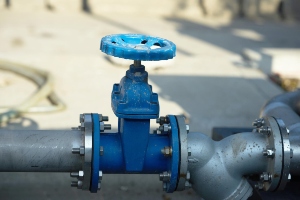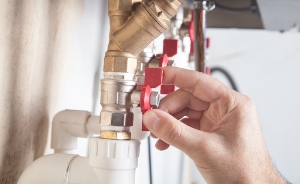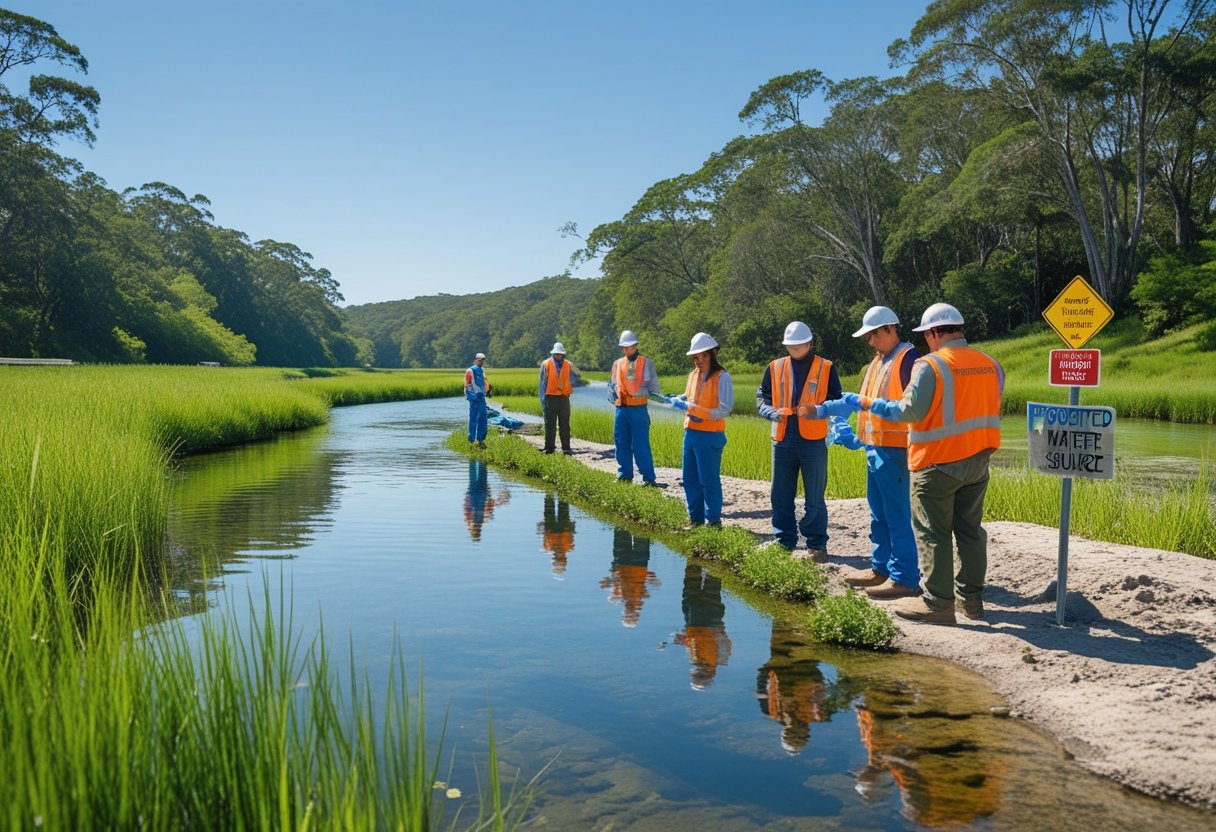Backflow in plumbing refers to the unintended reversal of water flow within your plumbing system. This phenomenon poses significant risks, especially when it causes non-potable water to mix with your clean drinking water supply. Understanding backflow is crucial for maintaining a safe and healthy environment in your home or business.
Inadequate protection against backflow can lead to contamination of potable water, resulting in serious health hazards for you and your loved ones. Effective backflow prevention methods, such as testing and installation of backflow preventers, are essential. With nearly half a century of experience, Pacific Backflow provides reliable and responsive backflow services in San Diego County to help ensure your water supply remains safe.
By prioritizing regular testing, timely repairs, and proper installations, you can prevent costly damage and maintain compliance with local regulations. Trust Pacific Backflow to safeguard your water supply with our comprehensive services designed for both residential and commercial properties.
Understanding Backflow in Plumbing
Backflow refers to the unintended reversal of water flow in a plumbing system, which can lead to contamination. Understanding the causes and types of backflow is crucial for maintaining safe drinking water at your property.
The Causes of Backflow
Backflow occurs when there is a change in water pressure in the plumbing system. This can happen for several reasons, including:
- Back Pressure: This may occur when the pressure in a downstream system exceeds the pressure in the supply system. Common causes include pumps and elevation changes, which can push contaminated water into the supply lines.
- Back Siphonage: This happens when a vacuum is created in the plumbing system, causing water to be pulled back through the system. Events like a burst pipe or a sudden drop in water supply pressure can trigger this phenomenon, risking contamination from sources such as sprinkler systems or open tanks.
Both back pressure and back siphonage can compromise water quality, making reliable backflow prevention essential for your plumbing system.
Types of Backflow: Back Pressure and Back Siphonage
Understanding the two main types of backflow—back pressure and back siphonage—helps clarify how contamination can occur.
- Back Pressure: This type occurs when downstream pressure exceeds the supply pressure, often due to pumps or equipment that increases pressure in the distribution system. If a backflow preventer fails, pollutants can enter clean water lines.
- Back Siphonage: This happens when a pressure drop creates a vacuum, drawing water backwards into the system. Situations such as a plumbing rupture or nearby firefighting efforts can lead to back siphonage, posing risks of contamination from neighboring sources.
It is crucial to have proper backflow prevention devices installed to protect your water supply. Services like those provided by Pacific Backflow can help ensure that your systems are tested and compliant, safeguarding your community's health.
Components of Backflow Prevention
Understanding the components involved in backflow prevention is crucial for maintaining safe water supply systems. This section focuses on the key devices and technologies that ensure clean water remains uncontaminated.
Backflow Prevention Devices
Backflow prevention devices are essential for protecting potable water from contamination. These devices ensure that water flows in one direction, preventing potential backflow situations. Common types include reduced pressure zone assemblies, which provide a high level of protection by using two check valves separated by an air chamber.
Pressure vacuum breakers are another common device, designed to protect against back siphonage. They work by maintaining atmospheric pressure in the system, allowing air to enter if a negative pressure occurs. Regular maintenance and testing of these devices are critical to ensure that they function correctly.
Check Valves and Air Gaps
Check valves act as automatic gates in your plumbing system and ensure water flows only in the intended direction. They are vital in preventing backflow—a key aspect of maintaining a safe water supply. These valves can wear out over time, making periodic inspections essential.
An air gap is a physical separation between the water supply and potential contaminants. It is one of the simplest forms of backflow prevention, effective in applications such as sinks and tubs. Maintaining an air gap during installations is crucial to ensure compliance with local regulations. Proper use of check valves and air gaps is essential for any backflow prevention strategy, safeguarding water quality for users.
Health Implications and Environmental Concerns
Backflow in plumbing systems poses significant health risks and environmental issues. Contaminated water can enter potable supplies, affecting public health and safety. It is crucial to understand the potential threats and the regulations designed to mitigate these risks.
Risks of Water Contamination
When backflow occurs, non-potable water can reverse its flow and mingle with clean water supplies. This situation can introduce harmful substances, including bacteria and chemicals, leading to severe health concerns such as gastrointestinal illnesses or more serious diseases.
Common contaminants include:
- Bacteria: Such as E. coli and Legionella, which can proliferate in stagnant water.
- Chemicals: Like pesticides or fertilizers that can leach into water supplies.
Failing to address backflow can result in long-term exposure to these contaminants, posing significant health risks to you and your community. Regular testing and maintenance of backflow prevention devices are necessary to safeguard your water from contamination. Reach out to professionals who can help, like Pacific Backflow.
Legal Regulations and Plumbing Codes
To protect public health, strict plumbing codes and regulations govern backflow prevention. These standards dictate the installation and maintenance of devices designed to prevent water contamination.
Most jurisdictions require annual testing to ensure backflow preventers function correctly. Failing to comply can lead to hefty fines and possible legal liability. It is essential to stay informed about local plumbing codes to avoid violations.
Additionally, many municipalities require records of backflow prevention testing to monitor compliance and protect water systems. Consulting with companies like Pacific Backflow can help ensure your backflow prevention systems meet all necessary regulations.
Installation and Maintenance of Preventers
Understanding how to properly install and maintain backflow preventers is crucial for ensuring the safety of your water supply. This section will discuss how to choose the right device, techniques for proper installation, and strategies for ongoing maintenance.
Choosing a Backflow Preventer
Selecting the appropriate backflow preventer is vital for your plumbing system. Consider factors such as flow rate, pressure requirements, and the type of contamination risks associated with your water supply. Some common types include the reduced pressure zone (RPZ) and double check valve assemblies.
Be sure to check local regulations, as some areas may have specific requirements for preventers. For reliable options, you can consult with specialists like Pacific Backflow, who can guide you in making the best choice based on your needs.
Proper Installation Techniques
Installation of a backflow preventer should always adhere to local plumbing codes. The device must be positioned in a visible area for easy maintenance and testing access. Ensure that test cocks are installed for easy periodic testing.
Make sure to install a differential relief valve as part of the backflow prevention system. This valve helps to prevent backpressure from causing contamination. Following proper installation procedures ensures your device operates as intended and minimizes risk to your water supply.
Maintenance Strategies
Regular maintenance ensures that your backflow prevention device functions effectively. Schedule annual inspections with certified technicians, who can check for leaks and overall functionality. Pacific Backflow offers hassle-free testing to maintain compliance with local regulations.
Don’t overlook the importance of flushing the system occasionally. This helps remove any debris or sediment that could affect performance. If your backflow preventer fails a test or shows signs of damage, timely repairs or replacements are essential for continued protection.
Case Studies and Real-World Incidents
Backflow incidents can pose significant risks to both residential and commercial properties. Understanding these scenarios helps in recognizing the importance of effective backflow prevention measures.
Residential Plumbing Scenarios
In residential settings, backflow can occur due to water main breaks or sudden pressure changes. These situations may lead to contaminated water entering your potable water supply, posing health risks.
For instance, a leak in a household plumbing system caused a significant backflow event. Homeowners reported foul odors and discoloration in their taps. This incident emphasized the importance of regular inspections and proper maintenance of backflow preventers to avoid property damage.
Key factors for homeowners:
- Regular testing of backflow devices.
- Prompt repairs when leaks are detected.
- Awareness of system changes that may affect pressure.
Maintaining awareness of these risks allows homeowners to protect their families and property effectively.
Commercial Building Challenges
In commercial buildings, the stakes are even higher. A backflow incident can disrupt business operations and result in substantial financial losses. These establishments often have complex plumbing systems that are more susceptible to backflow issues.
For example, a local restaurant experienced flooding due to a malfunctioning backflow preventer. Contaminated water infiltrated their clean water supply, leading to costly repairs and health inspections.
Important considerations include:
- Annual backflow testing to ensure compliance.
- Implementing emergency plans for water contamination.
- Understanding local regulations regarding backflow devices.
Addressing these challenges proactively helps maintain compliance and protect both the business and its clientele from potential harm.
Frequently Asked Questions
Understanding backflow and its implications in plumbing is essential for maintaining a safe and effective water system. The following FAQs address common concerns related to backflow issues, prevention measures, and their potential impacts on residential plumbing.
What are the common signs indicating a backflow problem in plumbing systems?
You may notice several signs of backflow issues. Various odors, such as a foul or chemical smell, can indicate contamination. Additionally, discolored water or a sudden drop in water pressure may signal a problem. Presence of unwanted water in areas where it shouldn’t be, like sinks or basements, is also a red flag.
How does a backflow preventer device function?
A backflow preventer functions by allowing water to flow in one direction while preventing reverse flow. It uses valves and pressure-sensitive mechanisms to ensure that water cannot flow back into the potable water supply. Regular testing and maintenance are crucial to ensure these devices operate correctly.
What are the typical causes of back siphonage in residential plumbing?
Back siphonage typically occurs due to a sudden drop in water pressure in the supply line. This can happen due to various reasons, such as a ruptured water main or excessive water usage from nearby fixtures. Contaminated water can be drawn back into the clean water supply if backflow prevention measures are not in place.
What steps are involved in professional backflow testing procedures?
Professional backflow testing involves several key steps. First, a technician will inspect the backflow preventer for visible defects. Next, they perform operational tests to ensure that all components function correctly. Finally, the results are documented, and any required repairs are discussed with you for compliance.
How can homeowners effectively prevent backflow incidents?
Homeowners can prevent backflow incidents by ensuring proper installation and maintenance of backflow preventer devices. Regular testing, such as the services offered by Pacific Backflow, is critical. Awareness of your plumbing system and avoiding activities that may cause a drop in water pressure are also vital preventive measures.
What are the potential consequences of backflow in domestic water systems?
The consequences of backflow can be serious. Contaminated water entering your drinking supply poses health risks to you and your family. Furthermore, backflow can lead to costly plumbing repairs and potential liability issues if contamination affects others in your community. Taking precautionary steps can help avoid these damaging effects.











